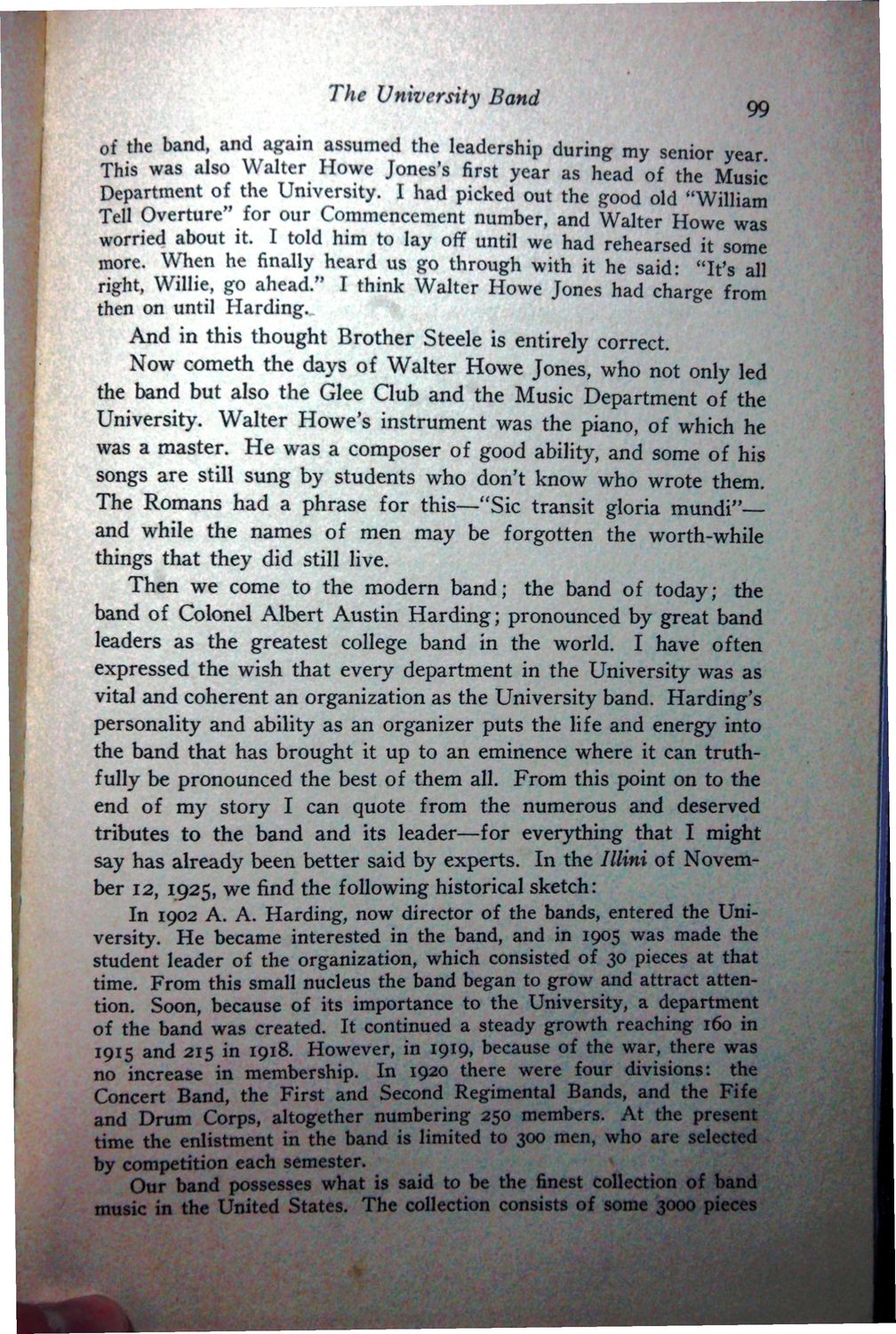| |
| |
Caption: Book - Banks of the Boneyard (Charles Kiler)
This is a reduced-resolution page image for fast online browsing.

EXTRACTED TEXT FROM PAGE:
The University Band 99 of the band, and again assumed the leadership during my senior year This was also Walter Howe Jones's first year as head of the Music Department of the University. I had picked out the good old "William Tell Overture" for our Commencement number, and Walter Howe was worried about i t I told him to lay off until we had rehearsed it some more. When he finally heard us go through with it he said: "It's all right, Willie, go ahead." I think Walter Howe Jones had charge from then on until Harding^ And in this thought Brother Steele is entirely correct. Now cometh the days of Walter Howe Jones, who not only led the band but also the Glee Club and the Music Department of the University. Walter Howe's instrument was the piano, of which he was a master. H e was a composer of good ability, and some of his songs are still sung by students who don't know who wrote them. The Romans had a phrase for this—"Sic transit gloria mundi" and while the names of men may be forgotten the worth-while things that they did still live. Then we come to the modern band; the band of today; the band of Colonel Albert Austin Harding; pronounced by great band leaders as the greatest college band in the world. I have often expressed the wish that every department in the University was as vital and coherent an organization as the University band. Harding's personality and ability as an organizer puts the life and energy into the band that has brought it up to an eminence where it can truthfully be pronounced the best of them all. From this point on to the end of my story I can quote from the numerous and deserved tributes to the band and its leader—for everything that I might say has already been better said by experts. In the Mini of November 12, 1925, we find the following historical sketch: In 1902 A. A. Harding, now director of the bands, entered the University. He became interested in the band, and in 1905 was made the student leader of the organization, which consisted of 30 pieces at that time. From this small nucleus the band began to grow and attract attention. Soon, because of its importance to the University, a department of the band was created. It continued a steady growth reaching 160 in 1915 and 215 in 1918. However, in 1919, because of the war, there was no increase in membership. In 1920 there were four divisions: the Concert Band, the First and Second Regimental Bands, and the Fife and Drum Corps, altogether numbering 250 members. At the present time the enlistment in the band is limited to 300 men, who are selected by competition each semester. Our band possesses what is said to be the finest collection of band music in the United States. The collection consists of some 3000 pieces
| |